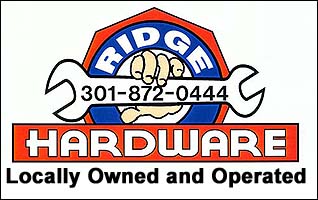By MATT FLEMING
PETERSBURG, W.Va.—A new heat recovery system for poultry litter in use at Cottage Hill Farm may hold some promise for energy cost control for Maryland farmers and may even reap environmental benefits.
In a nutshell, the heat recovery system takes the heat the litter generates while composting and transfers it into the chicken houses, reducing the amount of propane normally used to warm the barns.
"People look at litter like a villain, and rightly so," said Triea Systems Inc. owner Jim O'Brien. "What we do is turn it into a hero. If you can use this instead of using propane, to do what you were once doing for 70 percent less than you were once doing it, then that stuff's a hero."
Poultry litter, rich in nutrients like nitrogen and phosphorous, when applied in amounts greater than the crop and land can absorb, is one of the leading causes of algal blooms in the Chesapeake Bay—growths that absorb oxygen and sunlight, creating hypoxic "dead" zones.
Much of the current debate on Bay health centers on the delicate balance between this nutrient-high runoff and a $2.2 billion industry that, according to Delmarva Poultry Industry employed 13,155 people in 2011.
While representatives of Triea, headquartered in Frederick, Md., make no claims that the heat recovery system will address the nutrient issue, Will Taylor, who runs Cottage Hill Farm, said there are environmental benefits.
"I'm not sure that it depletes (the nutrients)," said Taylor. "It makes it a more stable element, where it's not going to leech as fast in the ground water. And that's something we need to research more after we get the thing up and going."
"Also, if you take the litter straight out of the chicken house, you get a lot of gassing off of ammonia and nitrogen," said Taylor. "Once you compost it and make it more stable, you reduce that also. So there's several ways you can improve the litter environmentally, just by stacking and composting."
There could be greater benefits to the environment.
By allowing the litter to compost, farmers could expand the market for it, said Sustainable Chesapeake's Executive Director Kristen Hughes Evans, whose group seeks "innovative approaches to restoring the Chesapeake Bay that drive economic development in support of farms, businesses, and communities in the region."
"Right now, the chicken litter gets spread on pastures and commodity crops, like soy beans, wheat, hay and row crops," said Evans. "If they can broaden their customers to fresh-market vegetable farmers, then that creates more opportunities for farmers to get paid."
Composting litter may help kill pathogens that prevent conventional litter from being used on farm-to-table crops like vegetables, said Royden Powell, the Maryland Department of Agriculture's assistant secretary of the Office of Resource Conservation.
But, "currently, the demand for litter in its uncomposted state exceeds the supply," said Powell.
On average, Taylor's heating costs are between $20,000 and $26,000 per house per month. O'Brien said that his system will save approximately 70 percent of that cost by reducing the propane usage.
To give a sense for what drives these high costs, the air temperature must be around 100 degrees when the hatchlings arrive, and it decreases by one-third over the span of 34 days. In addition, the air in the chicken house must be renewed approximately every five minutes to flush the harmful ammonia gas built up inside the coop.
A new system costs around $80,000 per house. Mike Hesse, Triea's regional system engineer, said that with the energy savings, the costs will be fully recouped within five years.
Because the system is still very much in its infancy, not a lot of data has been collected, particularly given that Taylor's was installed a little too late for the winter season. But as the recent weather has become colder, promising data has started coming in.
"We know that the system performs now," said Hesse. "Now we just want to make it more efficient for the farmer."
Farmers like Taylor have little time, so the system depends on the ease with which a farmer can use it. Litter has an optimum usage life of three months, which is how often it must be replaced. Because the process of collecting the litter and stacking it in the litter shed was somewhat cumbersome, improvements are being made.
"The only thing the farmer does is change out the litter," said Hesse. "But this system actually came out to be more work than we thought it would, so we've redesigned it, and the new design is being fabricated now."
The old system involved moving the litter in relatively small amounts to the shed, where the cylindrical heat exchanges were inserted. At Taylor's farm, there are 34,000 chickens per house, which create 42 tons of litter per house every six weeks.
That's a lot of litter to move manually.
The new system will consist of mattress-spring-like heat exchanges inside a roll-off Dumpster, which will be much more efficient for the farmer by cutting back on trips between the chicken houses and shed.
"I told them when we started that if this is a deal where I need even an hour a day, I can't do it," said Taylor. "Two or three times a year is not bad, but even once a week is bad."
Although Taylor's farm is the only current user of this system, O'Brien is trying to pilot a site with Perdue in Salisbury, and is also hoping to receive grants from Maryland. He hopes to have both taken care of within the next few weeks.


